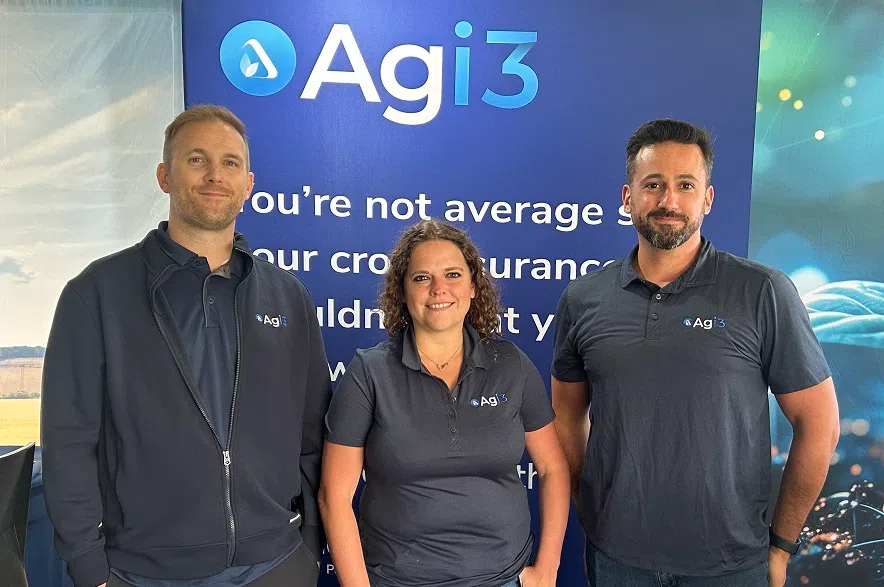Artificial intelligence is becoming a part of everyday life, and it’s not just tech companies using it. The agriculture industry is starting to adopt the technology as well.
Kyle Gibson is the managing director of operations for Agi3, a company that focuses on enterprise risk management, particularly in sectors like crop insurance. The team has a digital platform, similar to what’s used in farm management.
“We need to ingest the data – so we take a crop line from a farm and we immediately start using large language models and converting that into data that we can digitize,” Gibson explained from his booth at Ag in Motion.
When a crop is seeded in a specific location, it comes with a set price, Gibson said. For example, a farm growing canola in the north might pay a $15-per-acre premium, while a farm in the south could pay $10 or even $20, depending on the exact location. He said Agi3 has mapped every Legal Land Description farm in western Canada and assigned each a risk score based on its location.
“Even the farm themselves, if they start switching crops around, your price is going to change. We have a ton of algorithms in the back that start ingesting soil type, soil moisture,” Gibson continued. “We have public and private data that we bring in look at climatic volatility and that’s how we do all of our pricing.”
Read more:
- Wild pig expert and Sask. Crop Insurance Corp. at odds over report
- Drought support for farmers coming from provincial, federal governments
- Canadian growers get A+ in growing low-carbon-intensity oats and barley
Gibson said Agi3 has grown substantially in the last three years. He said there is a lot of demand from farmers for types of insurance like this.
“A lot of farmers probably have ten people a day knocking on their door and they promise the world. We take that data and that goes right into your pricing and it individualizes it – so you do get an immediate benefit for that data,” Gibson said. “Now you’re not subsidizing your neighbour anymore, you’re paying for your risk. So we’re trying to get better and better at that, just pricing your risk.”
Gibson said it’s hard to predict exactly where AI will take the company, but he’s optimistic about its potential. He believes the technology will improve how risk is priced, allowing for more flexible and tailored insurance coverage.
“What we want to be able to do is to say, ‘Okay, you bought insurance at the start of the year – why does it have to end there?’ If you start realizing you’re having a really good crop and maybe you want to throw the groceries to it – can you top up another $50? Can you get to field level insurance? “It takes a ton of work and data and partnerships to be able to have the trust be able to insure at that level,” he said.
Smoke doesn’t derail Day 1 of Ag In Motion
Although it was a smoky start to the day at Ag in Motion on Tuesday morning, the smoke moved away quickly and by 12 p.m. the site was mostly clear.
It was good news for vendors who were looking to sell and promote their product.
“We were setting up in this late yesterday and it was pretty nasty. I was actually worried it would drive people away, but it seems to have pretty good traffic. Things are picking up here,” said Greg Jones.
“I was a little concerned when I woke up this morning, but it seems to be clearing off nicely. It’s going to make it a little bit easier to breathe this week,” said vendor Luke Dirksen as he waited to talk to people at the convention.
“It’s easier to set things up and be outside all day long when you aren’t building a campfire,” said Miranda Hannotte.
The smoke conditions are expected to continue to get better throughout the week.











